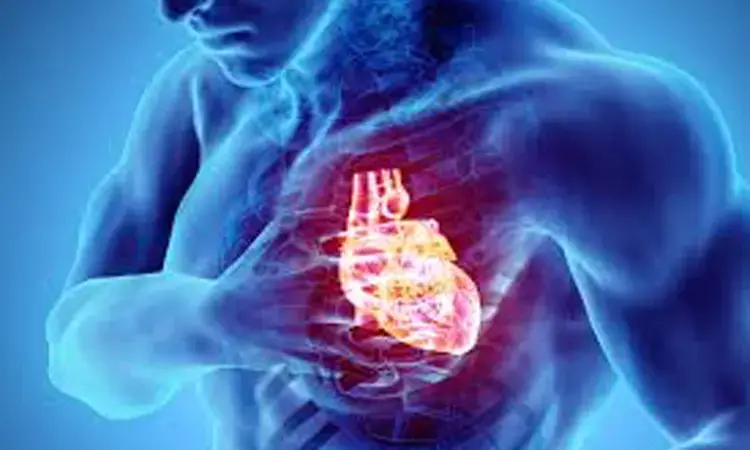- Home
- Medical news & Guidelines
- Anesthesiology
- Cardiology and CTVS
- Critical Care
- Dentistry
- Dermatology
- Diabetes and Endocrinology
- ENT
- Gastroenterology
- Medicine
- Nephrology
- Neurology
- Obstretics-Gynaecology
- Oncology
- Ophthalmology
- Orthopaedics
- Pediatrics-Neonatology
- Psychiatry
- Pulmonology
- Radiology
- Surgery
- Urology
- Laboratory Medicine
- Diet
- Nursing
- Paramedical
- Physiotherapy
- Health news
- Fact Check
- Bone Health Fact Check
- Brain Health Fact Check
- Cancer Related Fact Check
- Child Care Fact Check
- Dental and oral health fact check
- Diabetes and metabolic health fact check
- Diet and Nutrition Fact Check
- Eye and ENT Care Fact Check
- Fitness fact check
- Gut health fact check
- Heart health fact check
- Kidney health fact check
- Medical education fact check
- Men's health fact check
- Respiratory fact check
- Skin and hair care fact check
- Vaccine and Immunization fact check
- Women's health fact check
- AYUSH
- State News
- Andaman and Nicobar Islands
- Andhra Pradesh
- Arunachal Pradesh
- Assam
- Bihar
- Chandigarh
- Chattisgarh
- Dadra and Nagar Haveli
- Daman and Diu
- Delhi
- Goa
- Gujarat
- Haryana
- Himachal Pradesh
- Jammu & Kashmir
- Jharkhand
- Karnataka
- Kerala
- Ladakh
- Lakshadweep
- Madhya Pradesh
- Maharashtra
- Manipur
- Meghalaya
- Mizoram
- Nagaland
- Odisha
- Puducherry
- Punjab
- Rajasthan
- Sikkim
- Tamil Nadu
- Telangana
- Tripura
- Uttar Pradesh
- Uttrakhand
- West Bengal
- Medical Education
- Industry
Cardiac risk screening should be done for all youths at least every 3 years: AAP policy statement

SCA/SCD screening should be performed during the preparticipation physical evaluation or at least every three years or on entry into middle/junior high school and high school.
USA: Cardiac risk screening should be incorporated for all youths at least every 3 years regardless of their athletic status, according to the updated AAP policy statement. The updated policy statement is published in Pediatrics, the official journal of the American Journal of Pediatrics (AAP).
The policy states that all children should be screened for the risk of cardiac arrest.
The policy, from the AAP Section on Cardiology and Cardiac Surgery and the Pediatric & Congenital Electrophysiology Society (PACES), offers primary care providers a strategy for screening, evaluating, and managing the risk of sudden cardiac arrest (SCA) and sudden cardiac death (SCD) in youths.
The unexpected death of a seemingly healthy child is a tragedy not only for the family but for the community as well. Multiple studies have looked at sudden deaths in young people either as a whole or by individual disease processes. However, most of these studies are published in cardiology journals. The goal of the AAP-PACES policy is to present expanded information to pediatricians and other primary care providers.
The policy identifies channelopathies, cardiomyopathies, and other conditions that can pose a risk for SCA. It includes tables to help identify the features of channelopathies and cardiomyopathies, along with diagnostic methods to distinguish these entities.
The authors' address who should be screened (athletes vs. all children) for conditions that predispose children to SCA (primary prevention). They emphasize that no subgroup, such as athletes, should be the only ones screened.
SCA/SCD screening should be performed during the preparticipation physical evaluation or at least every three years or on entry into the middle/junior high school and high school. Four recommended questions can be incorporated into the routine visit (see below).
The goal of screening is to identify those at risk for SCD. While it is beneficial to identify children with any cardiac defect for possible treatment or follow-up, many congenital heart defects do not inhibit children from attending school or participating in activities nor do they pose a risk of cardiac arrest.
Realizing that primary prevention methods are less than perfect, the policy considers secondary prevention, including the creation of a cardiac emergency response plan for schools (https://bit.ly/3hZWTIa) and the role of the primary care provider as an advocate for CPR and automated external defibrillator training. It also provides information on the family evaluation following a cardiac arrest/death, including addressing bereavement, autopsies, and genetic testing. Lastly, there is a section for survivors of cardiac arrest on returning to activity after recovery.
The policy serves as a reasonably comprehensive guide for the primary care provider as to the conditions meriting caution and evaluation as well as how to handle an SCA/death in a young patient.
Reference:
The policy statement, "Sudden Death in the Young: Information for the Primary Care Provider," is published in the journal Pediatrics.
DOI: https://pediatrics.aappublications.org/content/148/1/e2021052044
Hina Zahid Joined Medical Dialogue in 2017 with a passion to work as a Reporter. She coordinates with various national and international journals and association and covers all the stories related to Medical guidelines, Medical Journals, rare medical surgeries as well as all the updates in the medical field. Email: editorial@medicaldialogues.in. Contact no. 011-43720751
Dr Kamal Kant Kohli-MBBS, DTCD- a chest specialist with more than 30 years of practice and a flair for writing clinical articles, Dr Kamal Kant Kohli joined Medical Dialogues as a Chief Editor of Medical News. Besides writing articles, as an editor, he proofreads and verifies all the medical content published on Medical Dialogues including those coming from journals, studies,medical conferences,guidelines etc. Email: drkohli@medicaldialogues.in. Contact no. 011-43720751


